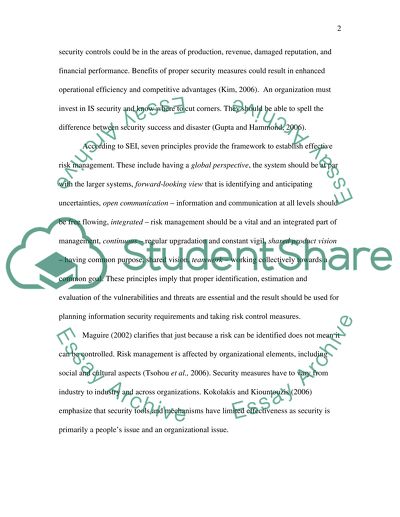Cite this document
(Information System Risk Management Essay Example | Topics and Well Written Essays - 1500 words, n.d.)
Information System Risk Management Essay Example | Topics and Well Written Essays - 1500 words. https://studentshare.org/information-technology/1537676-information-system-risk-management-paper
Information System Risk Management Essay Example | Topics and Well Written Essays - 1500 words. https://studentshare.org/information-technology/1537676-information-system-risk-management-paper
(Information System Risk Management Essay Example | Topics and Well Written Essays - 1500 Words)
Information System Risk Management Essay Example | Topics and Well Written Essays - 1500 Words. https://studentshare.org/information-technology/1537676-information-system-risk-management-paper.
Information System Risk Management Essay Example | Topics and Well Written Essays - 1500 Words. https://studentshare.org/information-technology/1537676-information-system-risk-management-paper.
“Information System Risk Management Essay Example | Topics and Well Written Essays - 1500 Words”. https://studentshare.org/information-technology/1537676-information-system-risk-management-paper.


